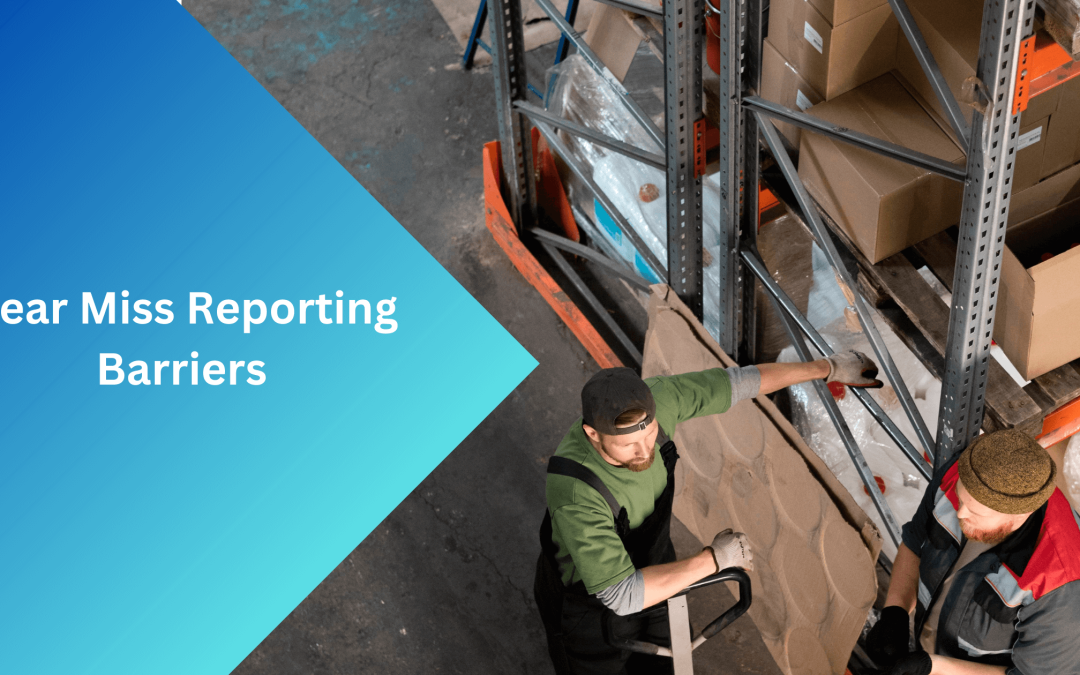Removing Near Miss Reporting Barriers on Material Handling Vehicles
Near miss reporting barriers has been a topic for discussion for at least 15 years. It includes everything from industrial to the healthcare industries. What was clear in articles from Prosapien, The Patient Safety Company, Maritime Academy and Construction Industry Institute to name a few, was that near miss reporting has been heavily relied on people reporting these close calls. So, the questions that still remains unanswered are: why don’t people report near accidents, do the reports actually help with safety and are you 100% reliant on people to get this information. Is it possible to get past these near miss reporting barriers?
What is Near Miss Reporting Barriers?
Near miss reporting barriers are the challenges that have been identified by professionals and safety professionals as reasons for near miss reporting to be ignored by the masses. The reason for identifying near miss reporting barriers is to simply improve safety.
Near Miss Reporting Barriers – Top 5
Through all of the publications that have discussed the topic of near miss reporting barriers, here are the top 5 that have been reported in no particular order:
- Embarrassed – People are embarrassed for two particular reasons. Either they are embarrassed that the near miss accident even occurred or feeling uncomfortable to report this type of accident.
- Hesitant / Afraid / Fear – People are many times uncomfortable to report this type of near miss because they are not sure (or sure) that management or their direct report will ‘get them back’ or retribution of some sort for making them look bad.
- Do Nothing – Many people might feel or believe that nothing is going to get better, so why report it?
- Difficult – There just isn’t an easy process for reporting near misses. I don’t even know what to do, where to go, find the paperwork, so why bother.
- Classification – This one is simply about the category to report it under.
Digitalization
Yes, some of this has resulted in digitization of the form. This certainly makes it easier, but remains highly reliant on people yet reporting, resulting in our topic of near miss reporting barriers. By simply making the form digital isn’t capturing every near miss incident and knowing where, how often and the potential reasons why it is occurring in the first place. But there’s one thing that we can say is true: near miss occurs frequently on material handling vehicles such as forklift, reach trucks, pallet jacks and the like. Because of the forklift safety system released today, like on the SIERA.AI safety system, near miss tracking and reporting automatically happens.
Near Miss Reporting Barriers on Material Handling Vehicles – All Gone
Because of the AI, vision and machine learning technologies utilized by SIERA.AI the forklift safety system automatically tracks near misses. These near misses are automatically categorized by pedestrians and objects. Without the interpretation, manual or digital reporting completed by a person, the system will automatically track near misses and tabulate the results in the telemetry Dashboard. Here you will be able to look further into the details and know:
- How often it has occurred
- Where it occurred
- Why (with picture or video) it occurred
With the answers to these questions, you can analyze the data and quickly make decisions before the near misses mature and turn into an injury or even a fatality.
Contact Us!
Contact us today at sales@siera.ai or call us at (512) 817 0702.
Book a Risk-Free Trial Or Get a Custom Quote

